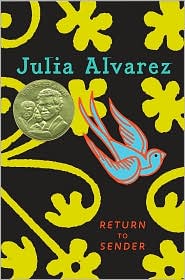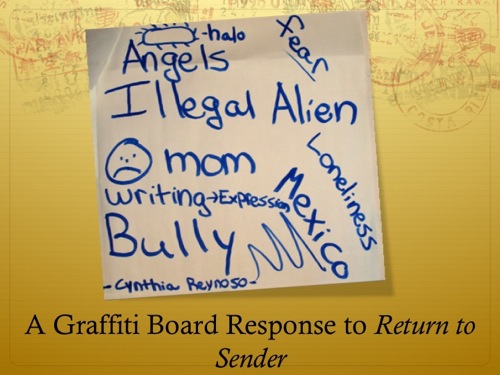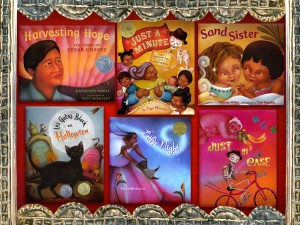By Andrea García, Hofstra University, Hempstead, NY, and Carmen Martínez-Roldán, Universtiy of Texas, Austin, TX
 In our work as Latina teacher educators, we prepare teachers to be successful literacy educators in a multilingual world. In our teaching, we use high quality children’s and adolescent literature in order to invite our students to read multiculturally (Hade, 1997). That is, through small group and whole class literature discussions, we engage pre-service and in-service teachers to make personal connections with the literature and to take a critical stance to explore questions that often reveal the many sociopolitical forces shaping the education of minority students in the United States. These include interpreting signs of power, race, class, and equity, among others, as they are represented in the literature.
In our work as Latina teacher educators, we prepare teachers to be successful literacy educators in a multilingual world. In our teaching, we use high quality children’s and adolescent literature in order to invite our students to read multiculturally (Hade, 1997). That is, through small group and whole class literature discussions, we engage pre-service and in-service teachers to make personal connections with the literature and to take a critical stance to explore questions that often reveal the many sociopolitical forces shaping the education of minority students in the United States. These include interpreting signs of power, race, class, and equity, among others, as they are represented in the literature.
In the past, we have selected books that address some of the familiar challenges encountered by recent immigrants to the United States, including the process of adapting to a new schooling practices and language learner. We have also used books that describe the day-to-day complexities of living in between two cultures from the perspective of cultural insiders. Examples include A Step from Heaven by An Na (2001), Tangled Threads by Pegi Deitz Shea (2003) or Behind the Mountains by Edwidge Danticat (2002)
This semester, Carmen and Andrea have planned for a Digital Literature Discussion Project with students enrolled in a graduate teacher preparation program in New York, and in an undergraduate program in Texas. During the month of March, our WOW Current posts will help to facilitate an online literature discussion of Return to Sender. This latest book by outstanding Latina writer Julia Alvarez, was recently announced as the recipient of the American Library Association’s prestigious Pura Belpré Award, which every year recognizes excellence in children and adolescent literature that “best portrays, affirms, and celebrates the Latino cultural experience.”
Continue reading →





 In our work as Latina teacher educators, we prepare teachers to be successful literacy educators in a multilingual world. In our teaching, we use high quality children’s and adolescent literature in order to invite our students to read multiculturally (Hade, 1997). That is, through small group and whole class literature discussions, we engage pre-service and in-service teachers to make personal connections with the literature and to take a critical stance to explore questions that often reveal the many sociopolitical forces shaping the education of minority students in the United States. These include interpreting signs of power, race, class, and equity, among others, as they are represented in the literature.
In our work as Latina teacher educators, we prepare teachers to be successful literacy educators in a multilingual world. In our teaching, we use high quality children’s and adolescent literature in order to invite our students to read multiculturally (Hade, 1997). That is, through small group and whole class literature discussions, we engage pre-service and in-service teachers to make personal connections with the literature and to take a critical stance to explore questions that often reveal the many sociopolitical forces shaping the education of minority students in the United States. These include interpreting signs of power, race, class, and equity, among others, as they are represented in the literature.
